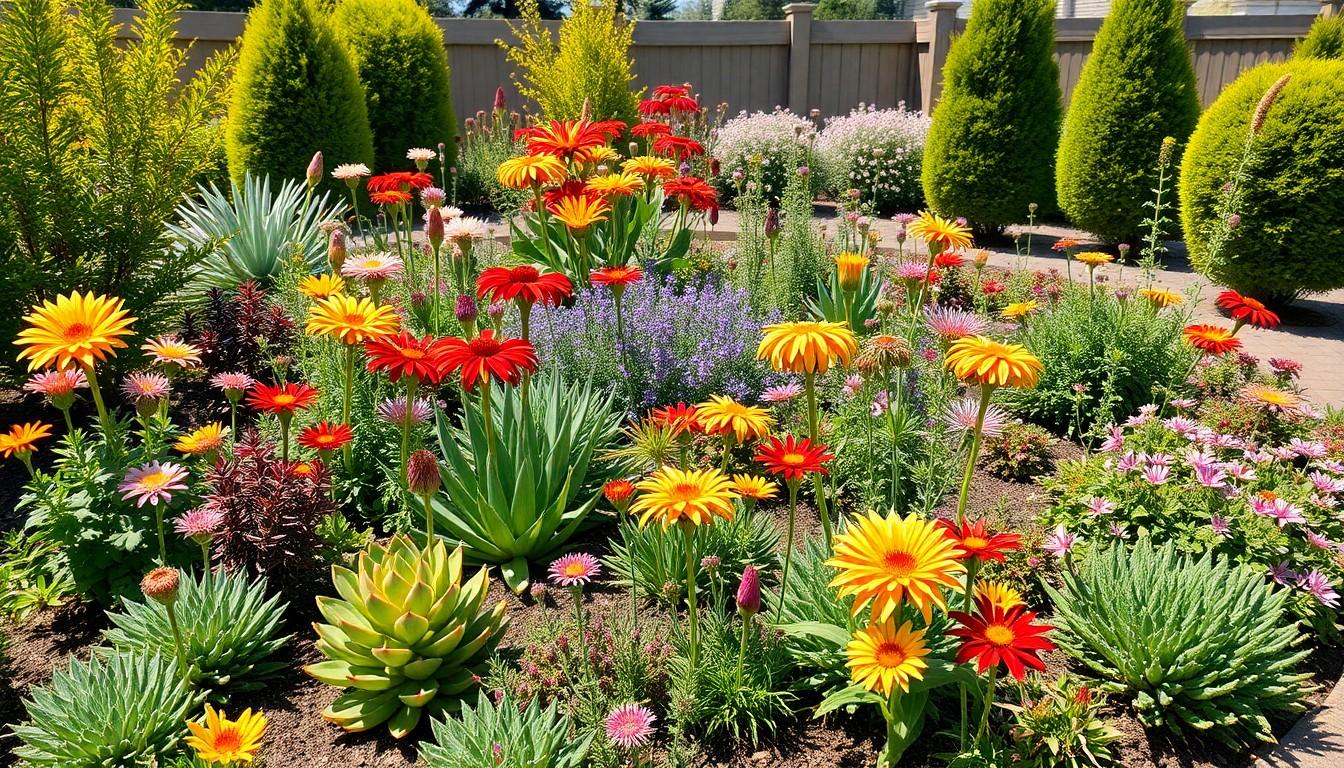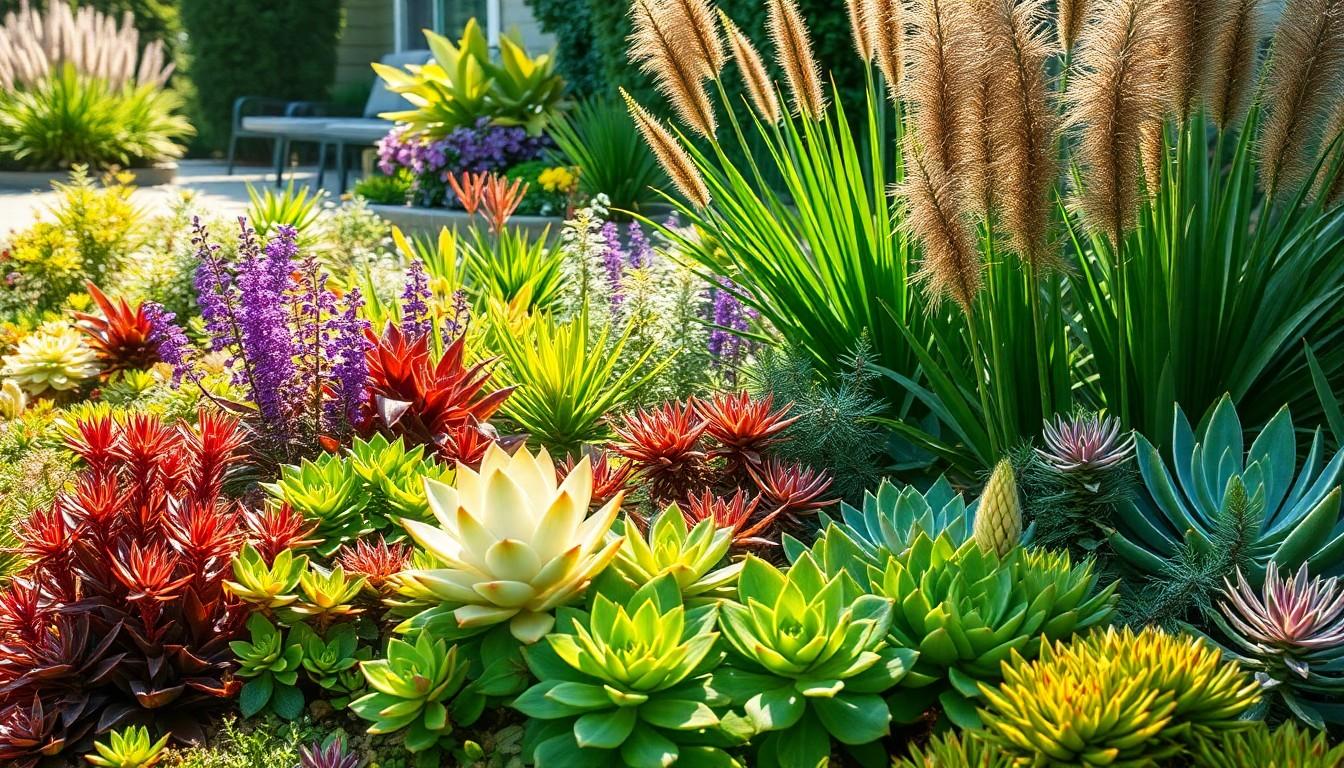Imagine a garden that thrives while you sip your coffee and binge-watch your favorite shows. Sounds like a dream, right? With the right low maintenance outdoor plants, that dream can become a reality. These botanical wonders don’t just add beauty to your yard; they practically take care of themselves, leaving you with more time to enjoy life’s simple pleasures.
Whether you’re a seasoned gardener or someone who struggles to keep a cactus alive, there’s a perfect plant out there for you. From resilient succulents to hardy perennials, these options are as easy-going as your favorite sitcom character. So why not let your garden do the heavy lifting while you kick back and relax? Dive into the world of low maintenance plants and discover how to transform your outdoor space into a lush oasis without breaking a sweat.
Overview Of Low Maintenance Outdoor Plants
Low maintenance outdoor plants offer a practical solution for those seeking beautiful gardens without significant effort. Choosing such plants benefits every gardener, from novices to seasoned experts. Popular options include succulents, ornamental grasses, and certain varieties of perennials.
Succulents require minimal water and adapt well to various climates. Characteristics like fleshy leaves allow them to store moisture, making them ideal for dry periods. Ornamental grasses provide texture and movement, thriving with little care once established. Varieties like Blue Fescue or Zoysia Grass enhance landscapes without demanding constant attention.
Perennials mark another excellent category for low maintenance gardening. Many types, such as daylilies and coneflowers, return each year, reducing replanting efforts. Their resilience makes them especially appealing in diverse environments.
Additionally, native species often excel in low maintenance gardens. They typically require less water and are more resistant to local pests. Incorporating plants like Black-eyed Susans and Purple Coneflowers not only beautifies spaces but also supports local ecosystems.
Choosing low maintenance outdoor plants fosters a stress-reducing environment. Effective planning with these varieties can transform any garden into a serene retreat. Enjoyment stems from less upkeep and more leisure time. This balance creates lasting satisfaction through simple and beautiful outdoor spaces.
Top Low Maintenance Outdoor Plants

Low maintenance outdoor plants provide beauty and ease of care. This section details some of the best options for effortless gardening.
Succulents
Succulents thrive in various climates with minimal water requirements. Their moisture-storing leaves enable them to endure dry conditions. Notable varieties include Echeveria and Aloe Vera, providing unique colors and shapes. They flourish in well-drained soil and require only occasional watering, making them ideal for busy individuals. Gardeners appreciate their ability to survive neglect while adding visual interest to outdoor spaces.
Perennials
Perennials return year after year, minimizing the need for replanting. Daylilies and coneflowers exemplify hardy choices that bloom vibrant flowers. These plants adapt well to different environments, showcasing a range of colors and textures. They often require little care after establishment, allowing gardeners to enjoy seasonal beauty without frequent maintenance. Additionally, many perennials attract pollinators, enhancing the garden ecosystem.
Shrubs
Shrubs like boxwoods and butterfly bushes provide structure and color with low upkeep. Once established, these plants need minimal watering and trimming. Drought-resistant varieties thrive in various soil types, making them versatile options. Bold foliage and flowers make them attractive additions to any landscape. They also create natural barriers, contributing to privacy while requiring less attention.
Benefits Of Choosing Low Maintenance Plants
Opting for low maintenance plants offers several advantages. These plants simplify gardening, making it accessible for busy individuals.
Time-Saving
Time savings represent a key benefit of low maintenance plants. Regular watering, pruning, and fertilizing require less effort. For instance, drought-resistant varieties thrive with minimal attention, allowing gardeners to focus on leisure activities. With reduced need for maintenance tasks, weekends become more enjoyable and stress-free. Busy schedules no longer impede the joy of gardening. Prioritizing easy-care species results in more time spent relaxing or engaging in other interests.
Cost-Effective
Cost-effectiveness plays an important role in selecting low maintenance plants. Reduced care translates directly into savings on gardening supplies like fertilizers, soil amendments, and water. These plants often require less frequent replacement since they naturally withstand environmental stresses. For example, perennials return season after season without the need to replant them annually. Consequently, expense management improves, and gardeners enjoy a flourishing landscape without breaking the bank. Ultimately, smart choices lead to long-term savings.
Eco-Friendly
Low maintenance plants contribute positively to the environment. Many of these options thrive in local climates with minimal watering, which conserves water resources. For instance, succulents adapted to arid conditions significantly reduce the need for irrigation. Additionally, certain low maintenance plants attract beneficial wildlife, enhancing local ecosystems. Selecting these plants supports biodiversity while promoting sustainable gardening practices. Choosing eco-friendly options reduces the carbon footprint associated with traditional gardening efforts. Sustainable gardens become havens for nature, promoting a healthier planet.
Tips For Caring For Low Maintenance Plants
Caring for low maintenance plants requires minimal effort while ensuring they thrive. Understanding specific needs enhances their growth and vibrancy.
Soil Selection
Soil plays a crucial role in plant health. Choose well-draining soil to prevent root rot and keep moisture levels balanced.
Consider sandy or loamy mixes for succulents, as these promote optimal drainage. For perennials, a nutrient-rich garden soil supports vigorous growth without frequent amendments.
Testing soil pH helps determine necessary adjustments for specific plants; most low maintenance varieties prefer a neutral to slightly acidic range.
Amending soil with organic matter, such as compost, boosts fertility and establishes a strong foundation for plant development.
Watering Practices
Watering practices vary among plants but remain straightforward for low maintenance options. Allow topsoil to dry between watering sessions, preventing over-saturation.
Many succulents thrive on bi-weekly watering schedules, while perennials may only require weekly hydration during dry spells.
Utilizing drip irrigation systems can reduce water wastage and provide consistent moisture. Observing plant leaves can indicate needs; wilting suggests they need water, while yellowing could signal overwatering.
Maintaining a mulch layer retains moisture and suppresses weeds, ensuring plants receive necessary hydration without excessive effort.
Seasonal Care
Seasonal care focuses on minimal yet effective maintenance tasks. In spring, check for new growth, removing any dead or damaged leaves to encourage healthier development.
Fertilizing in early spring promotes robust growth, although low maintenance plants often require less feeding than traditional varieties.
During summer, monitor for pests and diseases, addressing issues promptly to protect plants.
Fall preparation includes cutting back perennials and applying mulch, which insulates roots against winter cold.
In winter, plan for reduced watering, as many plants enter dormancy, needing less moisture.
Conclusion
Choosing low maintenance outdoor plants transforms any garden into a beautiful and serene space without the burden of extensive care. These plants not only save time and resources but also contribute positively to the environment. By selecting varieties that thrive with minimal effort, individuals can enjoy the benefits of gardening while freeing up time for relaxation and leisure activities. Embracing low maintenance options is a smart choice for anyone looking to create a stunning outdoor oasis that enhances their lifestyle. With the right plants in place, a vibrant garden can flourish effortlessly.

